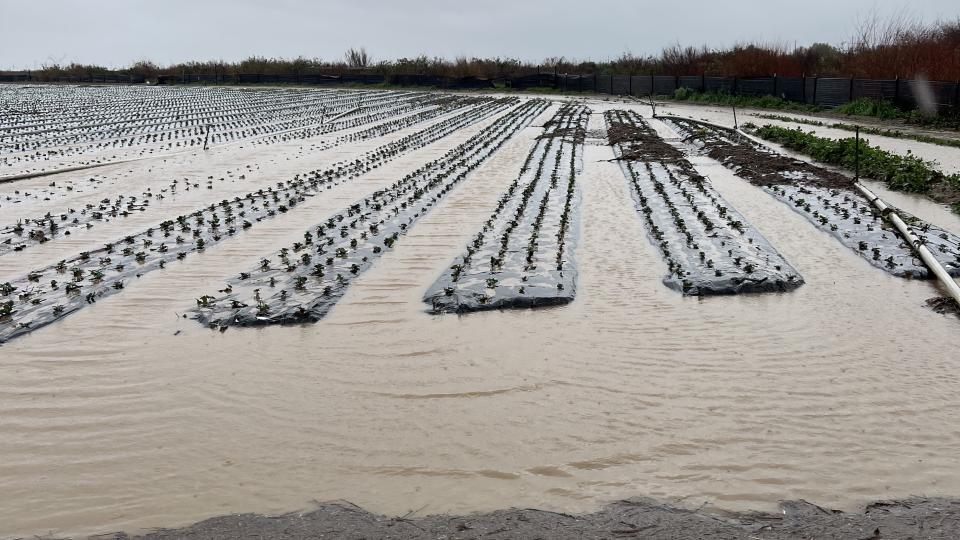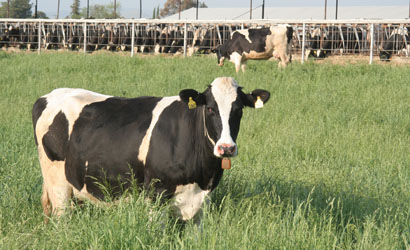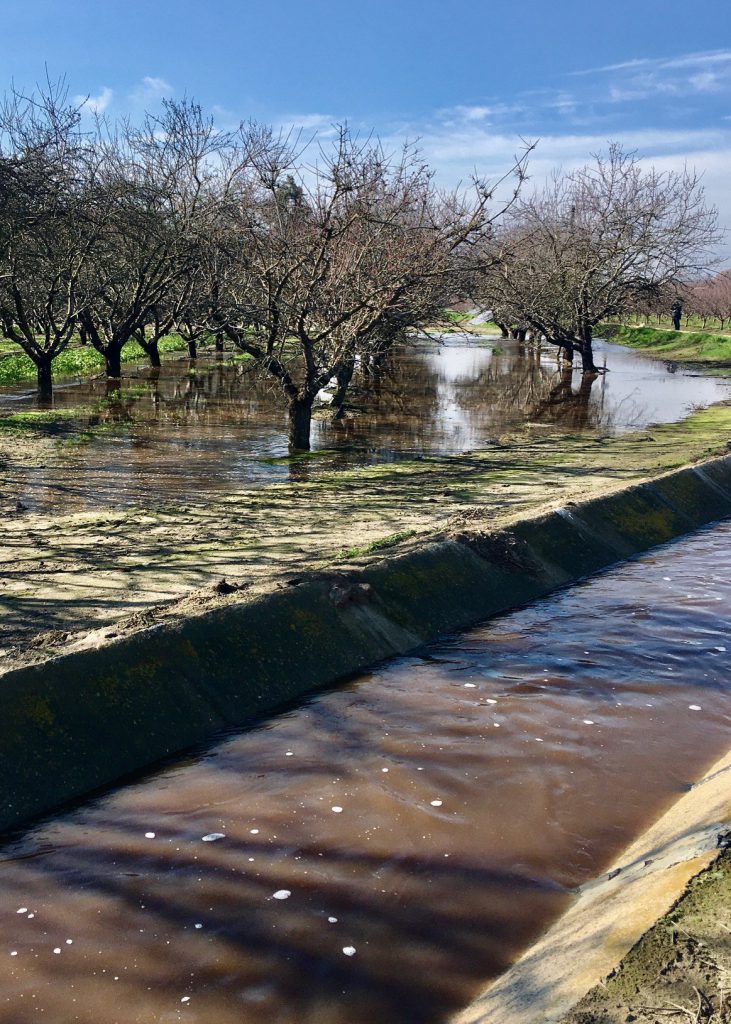From the USDA
California agricultural operations have been significantly impacted by the recent floods throughout the state. The U.S. Department of Agriculture (USDA) has technical and financial assistance available to help farmers and livestock producers recover. Impacted producers should contact their local USDA Service Center to report losses and learn more about program options available to assist in their recovery from crop, land, infrastructure and livestock losses and damages.
“Production agriculture is vital to the California economy, and USDA stands ready to assist in the recovery from these catastrophic flood events,” said Zach Ducheneaux, Administrator of USDA’s Farm Service Agency (FSA), who met with disaster-impacted producers last week in Fresno, Yuba, Salinas Valley and other areas. “I assure you that USDA employees are working diligently to deliver our extensive portfolio of disaster assistance programs and services to all impacted agricultural producers. We’re also proud of recent updates FSA made to disaster assistance programs that allow us to improve our response to California producers.”
USDA Disaster Assistance
Producers who experience livestock deaths may be eligible for the Livestock Indemnity Program (LIP). To participate in LIP, producers will be required to provide verifiable documentation of death losses resulting from an eligible adverse weather event and must submit a notice of loss to their local FSA county office within 30 calendar days of when the loss of livestock is apparent.
Meanwhile, the Emergency Assistance for Livestock, Honeybees, and Farm-Raised Fish Program provides eligible producers with compensation for feed and grazing losses. For ELAP, producers will need to file a notice of loss within 30 days and honeybee losses within 15 days.
Additionally, eligible orchardists and nursery tree growers may be eligible for cost-share assistance through the Tree Assistance Program to replant or rehabilitate eligible trees, bushes or vines lost. This complements Noninsured Crop Disaster Assistance Program or crop insurance coverage, which covers the crop but not the plants or trees in all cases. For TAP, a program application must be filed within 90 days.
“Once you are able to safely evaluate the impact on your operation, be sure to contact your local FSA office to timely report all crop, livestock and farm infrastructure damages and losses,” said Blong Xiong, State Executive Director for FSA in California. “To expedite FSA disaster assistance, you will likely need to provide documents, such as farm records, herd inventory, receipts and pictures of damages or losses.”
FSA also offers a variety of direct and guaranteed farm loans, including operating and emergency farm loans, to producers who are unable to secure commercial financing. Producers in counties with a primary or contiguous disaster designation may be eligible for low-interest emergency loans to help them recover from production and physical losses. Loans can help producers replace essential property, purchase inputs like livestock, equipment, feed and seed, cover family living expenses or refinance farm-related debts and other needs. Additionally, FSA has a variety of loan servicing options available for borrowers who are unable to make scheduled payments on their farm loan debt to FSA because of reasons beyond their control.
Risk Management
Producers who have risk protection through Federal Crop Insurance or FSA’s NAP should report crop damage to their crop insurance agent or FSA office. If they have crop insurance, producers should report crop damage to their agent within 72 hours of damage discovery and follow up in writing within 15 days. For NAP covered crops, a Notice of Loss (CCC-576) must be filed within 15 days of the loss becoming apparent, except for hand-harvested crops, which should be reported within 72 hours.
“Crop insurance and other USDA risk management options are offered to help producers manage risk because we never know what nature has in store for the future,” said Jeff Yasui, Director of RMA’s Regional Office that covers California. “The Approved Insurance Providers, loss adjusters and agents are experienced and well trained in handling these types of events.”
Producers who have not applied for NAP coverage may still be covered. FSA updated NAP earlier this month to remove barriers and establish procedures through which an underserved producer with a CCC-860, Socially Disadvantaged, Limited Resource, Beginning and Veteran Farmer or Rancher Certification, on file prior to the applicable NAP application closing date will automatically receive basic coverage for any NAP-eligible crops they plant. Like all other covered producers, underserved producers will still need to file a notice of loss and apply for benefits.
Conservation
FSA’s Emergency Conservation Program (ECP) and Emergency Forest Restoration Program (EFRP) can assist landowners and forest stewards with financial and technical assistance to restore fencing, damaged farmland or forests. Earlier this month, FSA updated ECP to enable advance payments, up to 25% of costs, for all ECP practices.
USDA’s Natural Resources Conservation Service (NRCS) administers the Emergency Watershed Protection (EWP) program, which provides assistance to local government sponsors with the cost of addressing watershed impairments or hazards such as debris removal and streambank stabilization. The EWP Program is a recovery effort aimed at relieving imminent hazards to life and property caused by floods, fires, windstorms and other natural disasters. All projects must have an eligible project sponsor. NRCS may bear up to 75% of the eligible construction cost of emergency measures (90% within county-wide limited-resource areas as identified by the U.S. Census data). The remaining costs must come from local sources and can be in the form of cash or in-kind services.
EWP is designed for installation of recovery measures to safeguard life and property as a result of a natural disaster. Threats that the EWP Program addresses are termed watershed impairments. These include, but are not limited to:
- Debris-clogged waterways.
- Unstable streambanks.
- Severe erosion jeopardizing public infrastructure.
- Wind-borne debris removal.
Eligible sponsors include cities, counties, towns or any federally recognized Native American tribe or tribal organizations. Sponsors must be able to provide the local construction share, obtain permits and site access and agree to perform operations and maintenance of the constructed projects. Willing sponsors must submit a formal request (by mail or email) to the state conservationist for assistance within 60 days of the natural disaster occurrence or 60 days from the date when access to the sites become available. For more information, potential sponsors should contact their local NRCS office.
“NRCS can be a very valuable partner to help communities with their recovery efforts,” said Carlos Suarez, State Conservationist for the NRCS in California. “Our staff will work with communities to make assessments of the damages and develop approaches that focus on effective recovery of the land.”
More Information
On farmers.gov, the Disaster Assistance Discovery Tool, Disaster Assistance-at-a-Glance fact sheet, and Farm Loan Discovery Tool can help producers and landowners determine program or loan options. For assistance with a crop insurance claim, producers and landowners should contact their crop insurance agent. For FSA and NRCS programs, they should contact their local USDA Service Center.
Also visit CDFA’s Flood Recovery Resources page for more information about flood recovery programs







